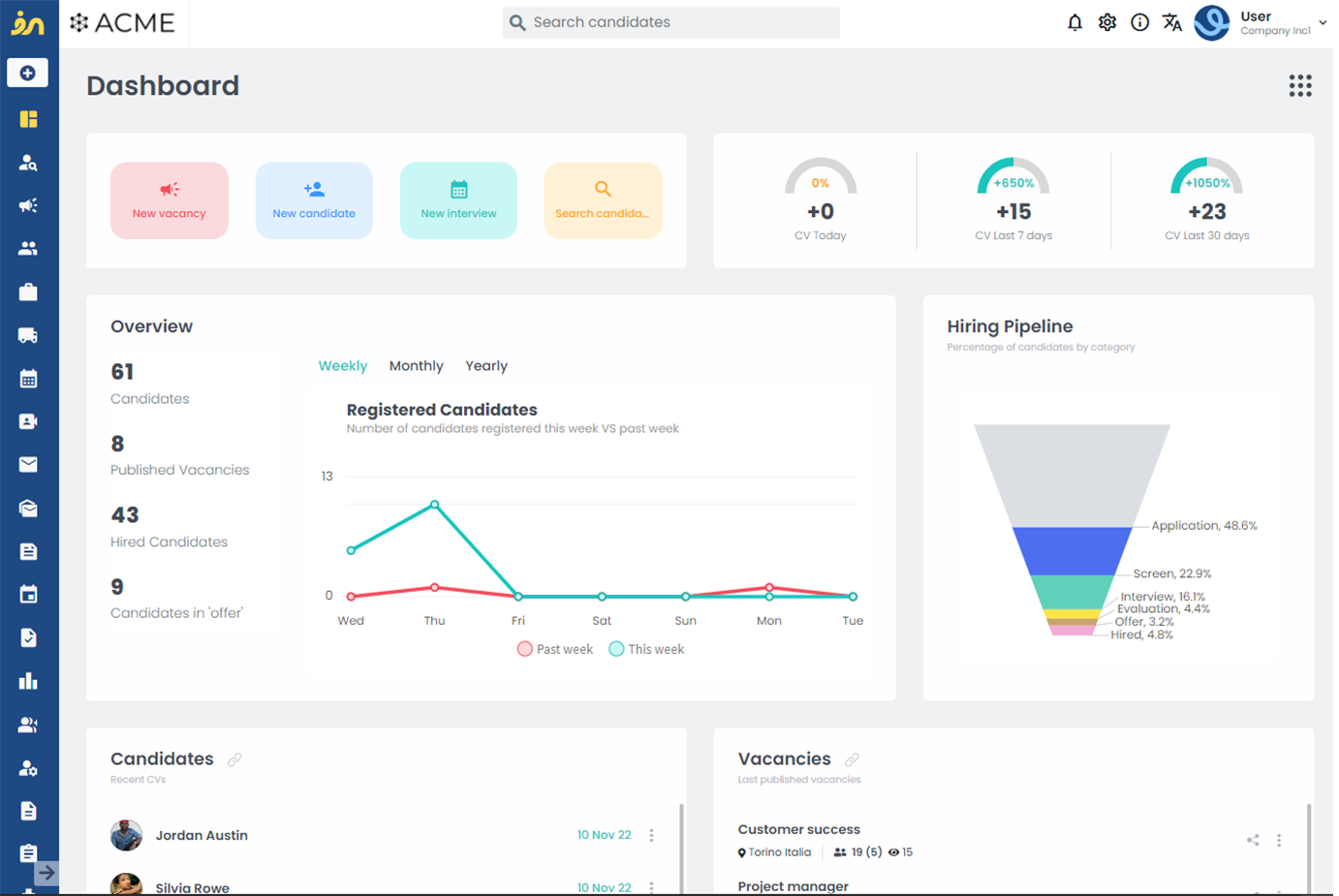Releasing the Power of Data: Enhancing HR Strategies With Cutting-Edge Staffing Monitoring Software
By utilizing the power of data analytics, companies can not just improve their employment techniques however likewise enhance worker retention and productivity. The harmony between data-driven understandings and progressed modern technology presents a compelling possibility for Human resources specialists to change their approach towards talent monitoring.
Relevance of Data-Driven Human Resources Techniques
Data-driven Human resources methods allow companies to optimize their labor force administration, employment procedures, and worker involvement initiatives. By examining information connected to staff member performance, turn over rates, and skill spaces, Human resources divisions can recognize fads, anticipate future needs, and establish proactive options to resolve difficulties.
Data-driven human resources approaches likewise play a vital duty in enhancing employee contentment and retention. With the evaluation of worker responses, efficiency testimonials, and training end results, human resources professionals can tailor individual growth strategies, recognize high-potential workers, and cultivate a society of continual learning and development within the organization. In addition, data-driven understandings make it possible for human resources teams to straighten their techniques with the overall company goals, ensuring that skill management efforts straight contribute to organizational success.
Advantages of Staffing Management Software Application
Making use of staffing administration software program simplifies the employment and onboarding procedures for HR departments, enhancing effectiveness and accuracy in talent purchase. One substantial benefit of this software application is the capability to centralize candidate data, making it quickly available for employment groups. By having all applicant details in one area, human resources specialists can successfully track candidate progress, communicate effectively with prospective hires, and make certain a seamless recruitment experience.
Furthermore, staffing management software application frequently includes attributes such as resume analyzing and keyword phrase matching, which assist in swiftly identifying top prospects that match the task requirements. This automation lowers the moment invested in hand-operated resume evaluating, permitting human resources personnel to concentrate on even more tactical jobs. staffing management software. Additionally, these systems can integrate with job boards and social networks systems, expanding the reach of task posts and drawing in a diverse pool of candidates
Additionally, analytics and reporting tools within staffing monitoring software application give useful insights into recruitment metrics, such as time-to-fill and cost-per-hire. This data-driven technique allows HR groups to make enlightened decisions, enhance employment approaches, and improve general employing processes. By leveraging these advantages, organizations can simplify their ability purchase initiatives, enhance prospect experience, and eventually develop a solid labor force.
Enhancing Employment Procedures With Information
Employing data-driven techniques in employment processes has actually come to be significantly important for companies seeking to improve their talent acquisition results. By leveraging data, business can make more educated choices throughout the recruitment lifecycle, eventually leading to better hires and improved retention rates. One vital way data boosts recruitment processes is by maximizing job postings based upon understandings from past effective hires. Analyzing metrics such as the source of leading ability, time to fill up positions, and prospect top quality can aid employers customize task summaries to draw in the right candidates effectively.
Furthermore, data analytics can simplify the screening and selection procedure by identifying patterns in prospect credentials and performance indications. Overall, integrating information into recruitment procedures encourages companies to make smarter working with choices and construct high-performing teams.
Improving Employee Retention Via Modern Technology

One method innovation can improve employee retention is through the use of employee engagement platforms. These systems permit for real-time comments, acknowledgment, and interaction in between workers and monitoring, cultivating a society of recognition and support. Additionally, technology can make it possible for tailored understanding and advancement programs tailored to individual staff member requirements and occupation goals, increasing work contentment and loyalty.
Furthermore, information analytics devices can help companies determine patterns and patterns connected to worker turn over, enabling them to take proactive actions to deal with potential problems before they rise. In general, by leveraging technology successfully, organizations can develop an extra helpful and engaging workplace that motivates staff members to stay and expand within the company.
Maximizing Labor Force Productivity With Data

Through the analysis of information, human resources divisions can identify patterns and trends that affect efficiency degrees. For instance, by tracking staff member work hours and project conclusion rates, organizations can optimize job timetables to ensure that tasks are efficiently distributed among employee. Furthermore, data can reveal skill gaps within the workforce, permitting human resources to apply targeted training programs that boost staff member capacities and total efficiency.
Moreover, data-driven efficiency assessments allow managers to provide specific responses and assistance to staff members, cultivating a society of constant improvement. Overall, leveraging data to optimize workforce productivity is a strategic strategy that equips organizations to achieve their objectives successfully and efficiently.
Conclusion
To conclude, using advanced article staffing monitoring software application can considerably enhance human resources techniques by leveraging the power of data. By integrating data-driven recruitment procedures, enhancing staff member retention with technology, and maximizing labor force productivity, companies can streamline their procedures, make more enlightened decisions, and eventually achieve better success in managing their human funding. Embracing these technical advancements is vital in the ever-evolving landscape of human resource monitoring.
Data-driven Human resources strategies allow firms to optimize their workforce administration, employment processes, and employee interaction campaigns. By analyzing data associated to worker efficiency, turn over rates, and skill spaces, HR divisions can recognize fads, Discover More predict future needs, and establish positive options to resolve challenges.
